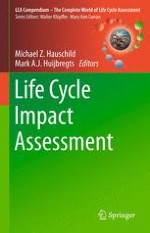2015 | OriginalPaper | Buchkapitel
13. Abiotic Resource Use
verfasst von : Pilar Swart, Rodrigo A. F. Alvarenga, Jo Dewulf
Erschienen in: Life Cycle Impact Assessment
Verlag: Springer Netherlands
Aktivieren Sie unsere intelligente Suche, um passende Fachinhalte oder Patente zu finden.
Wählen Sie Textabschnitte aus um mit Künstlicher Intelligenz passenden Patente zu finden. powered by
Markieren Sie Textabschnitte, um KI-gestützt weitere passende Inhalte zu finden. powered by
